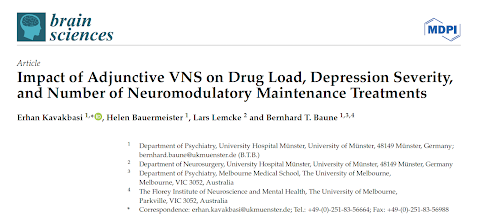Neuroplastic Effects of ECT: New Review in a Belgian Medical Journal
Out on PubMed, from Belgian colleagues, is this review:
[The neuroplastic effects of electroconvulsive therapy].
Rev Med Liege. 2022 Sep;77(9):527-531.PMID: 36082600 French.
The abstract is copied below:
Major depressive disorder is an important cause of disability around the world, with a tremendous psychological burden and extensive socioeconomic consequences. Whilst both psychotherapy and psychopharmacology are effective in treating a depressive episode, often there is a delay of several weeks between the start of treatment and the first beneficial effects. More importantly, approximately 30 % of patients do not remit, even after several treatment attempts. As the oldest biological treatment in psychiatry that is still available, electroconvulsive therapy (ECT) remains the most potent of antidepressant interventions, today achieving a staggering 70-80 % response and a 50-60 % remission rate. In treatment-resistant patients, response rates are even as high as 50 %-70 %. Despite its effectiveness, the neurobiological mechanisms of ECT remain unclear. A large body of research suggests that ECT induces widespread changes in both brain structure and function. A key factor behind these powerful therapeutic properties appears to be the important neuroplastic effects of this treatment. This review of the literature will discuss the importance of neuroplasticity in the pathophysiology of depression and then bring up the neuroplastic effects of ECT.Keywords: Depression; Neuroplasticity; Electroconvulsive therapy.
The full article (in French) is not yet readily available, but it is good to know about this paper. The abstract is informative and makes it quite clear that this is an excellent and welcome review in a Belgian medical journal.
Kudos to Drs. Belge and Constant!




Comments
Post a Comment